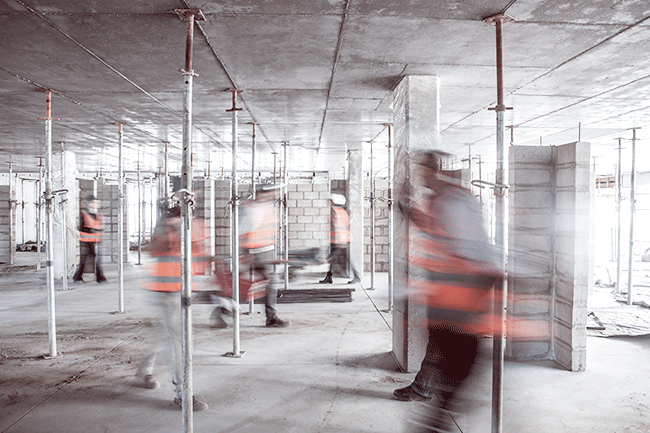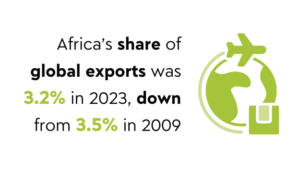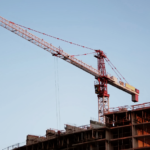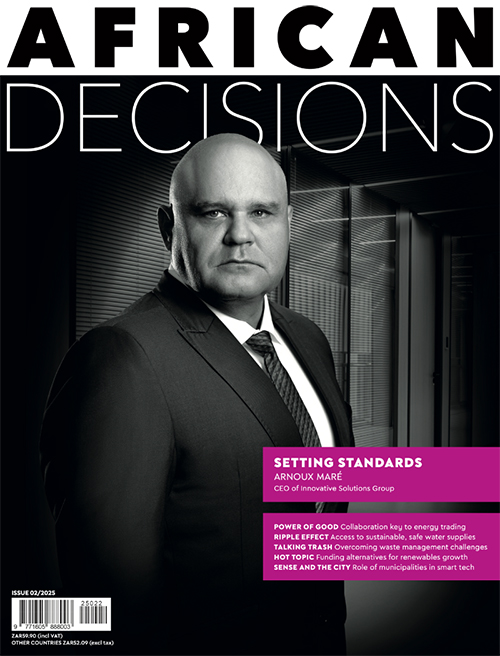Compared to the rest of the world, Africa is a relative latecomer to zone development. While programmes such as the Shannon Free Zone in Ireland and similar zones in most other industrialised countries in Western Europe have been in existence since the 1950s, the majority of African countries – with the exception of Liberia, Senegal and Mauritius – established zone programmes only around the year 2000.
At that time, South Africa launched four of its industrial development zones (IDZs), based around its major ports. Liberia and Senegal were the first zone developers in Africa in the early 1970s with Mauritius following suit, setting up nine single-factory export processing zones (EPZs) to kick-start a swing away from a traditional agricultural economy (based on sugar) to a highly successful industrialised, middle-income economy in the following years.
Up to 1991, it was textiles in particular that formed the bulk of Mauritian zone-related exports (83%) and gave rise to most of the jobs that came out of the zone initiatives. In later years, zone activity through government support led to a range of products being added to textile manufacture, including furniture, jewellery and leather goods. However, Sean Woolfrey, researcher at Trade Law Centre in Stellenbosch, South Africa, says that while the Mauritian programme became a notable success, many early African zone programmes were disappointing and failed to achieve their goals.
Among other African nations, Egypt has established numerous zones since 2002, the most prominent being North West Suez near the southern entrance of the Suez Canal, 45 km south of Suez City and adjacent to the privately managed port of Sokhna.
Twenty-three other zones – some of which are public and some private – must export more than half of their production in return for which the enterprises are rewarded with benefits such as exemptions from taxes and customs duties, labour provision and competitive utility prices. Each investment zone targets a particular industry in order to form integrated clusters, and in addition to industrial activities, pursuits such as education and scientific research are also catered for in each zone.
The Kenyan government started developing zones in the country from the 1990s with a view to shifting the economy from import substitution to export-led growth. It set about establishing special authorities to manage numerous EPZs in the hope of attracting new investment, facilitating skills transfer, diversifying exports and boosting technology.
The Coega IDZ near Port Elizabeth in the Eastern Cape is recognised as one of the most labour-friendly industrial zones in the world
Job creation was another key driver behind Kenya’s thinking. By 2013, its 40 EPZs were offering employment to 40 000 workers whose efforts contributed to 10% of the country’s total exports, mostly to the US under a favourable trade treaty that makes that continent’s markets more accessible to African economies.
With World Trade Organisation (WTO) scrutiny of the export subsidies to zone industries, the Kenyan government has recently adjusted its zone policy and is in the process of switching to incentives that are well aligned with the WTO regime in the form of special economic zones (SEZs), located at Mombasa, Kisumu and Lamu.
In South Africa, where four major industrial zones are situated around the ports of Saldanha Bay, Richards Bay and Durban, as well as at OR Tambo International Airport in the Gauteng province, the government has also recently revised its industrial policy and introduced new investment-support measures and incentives.
At Springs on the industrial East Rand in Gauteng, a so-called new-generation zone is being established to place South Africa firmly on the global stage as a leader in the reduction of global greenhouse-gas emissions and containment of urban pollutants through hydrogen fuel-cell manufacture. The fuel cells produce electricity by combining hydrogen and oxygen from the air over a catalyst such as platinum. The initiative entails developing increased demand for platinum – of which South Africa is endowed with at least 75% of the world’s total supplies.
The drivers of this project – the University of the Western Cape, Hydrogen South Africa Systems, Impala Platinum Refineries (Implats) and the Department of Science and Technology – explain that part of the project is also co-funding the development of a prototype forklift and refuelling station. Implats wants to begin using hydrogen fuel-cell technology as its main source of energy for material handling and underground mining equipment.
At the OR Tambo IDZ in the Ekurhuleni municipality outside Johannesburg, work is under way to establish a jewellery manufacturing precinct on 725 ha of land.
The implementation organisation, Gauteng Growth and Development Agency, offers dedicated customs support and duty-free importation of production-related raw materials, as well as reduced tax and tax-exemption provision for certain activities as part of the operations. Ultimately, the zone will include the manufacture of components for the information and communications sector as well as watch-making.
Further south, in the Western Cape, the Saldanha Bay IDZ is South Africa’s first dedicated development in the oil and gas services and marine-repair sector. The project – a collaboration of different spheres of government – commenced in 2013 when SBIDZ Licensing Company was appointed to implement it.
The plan is to support upstream exploration and production in the West and East African regions, as well as offering major rig repair facilities and services in these areas. ‘The focus is on job creation and skills development for the local population,’ says Provincial Minister of Economic Opportunities Alan Winde.
On the east coast, the Richards Bay special economic zone (SEZ) is home to South Africa’s main coal export terminal, where additional government funding was secured to establish the production of renewable energy and oil and gas production.
While large industrial giants such as Mondi Paper, Foskor and Transnet have been anchored at the zone for several years, more recently foreign companies are starting up operations in paint manufacturing and waste oil processing, along with a lubricant plant and a solar water heater-manufacturing plant.
In the Free State, Botshabelo Industrial Park is being upgraded at a cost of ZAR24 million as part of a government programme to upgrade all existing industrial parks in the country.
South Africa’s busiest port at Durban in KwaZulu-Natal is another example of impressive industrial-zone activity supported by the government’s recent policy incentives for SEZs, aimed at forging public/private partnerships with local and foreign investors.
The Durban Investment Promotion Agency, which manages the investments and developments on behalf of the city, says attractive investment opportunities in the industrial zone lie in the manufacturing of automotive products, clothing and textiles, maritime, logistics and agro-processing. ‘The region’s strategic geographical position on world trade routes provides access to major global markets such as the Americas, Europe, the East and the whole of Africa,’ says Durban Investment Promotion Agency CEO Russell Curtis.
At the same time, the Coega IDZ near the coastal city of Port Elizabeth in the Eastern Cape is recognised as one of the most labour-friendly industrial zones in the world because of efficient industrial-relations practices, according to Business Day.
Mauritius and Kenya managed to show impressive benefits from their special industrial zones programmes by 2014
An example of this achievement is the Dedisa peaking power plant, which was recently completed in record time of less than two years, owing to minimal labour disruptions at Coega.
Executive director of South Africa’s Manufacturing Circle Philippa Rodseth says that while South Africa’s new SEZ policy extends the scope of the previous IDZ programme by providing for a more diverse typology of zones to include free zones, sector development zones and free ports, the SEZ Act does not, however, provide for single-factory SEZs where factories do not have to be located within a designated zone to receive incentives and privileges.
Single-factory SEZ programmes are similar to that of the bonded warehouse but offers a broader set of benefits and more flexible controls.
‘Single-factory SEZs could provide flexibility in terms of location of factories, and the award of SEZ status to such factories could contribute significantly to the economic and export growth objectives of the programme,’ she says.
Rodseth cites the zones policy of the Tanzanian government as an example of a less restrictive regime. ‘Investors can either set up operations in a designated industrial park where they share infrastructure and utilities with other investors, or they can establish single-factory units at any location in Tanzania and have these declared “stand-alone” export processing zones.
‘These allow operators to enjoy a 10-year tax holiday, exemption from custom duties and tax on raw materials and capital goods, and a range of further government-sponsored benefits. In return, EPZ operators have to export at least 80% of goods they process, produce or manufacture,’ she says.
Work is still needed on aspects such as infrastructure and governance issues for Africa to really leverage zone development. According to Woolfrey, who relies on research by different institutions, including the World Bank, only a few African countries such as Mauritius and Kenya managed to show impressive benefits from their special industrial zones programmes by 2014.
‘Although the performance varies from country to country, African zones have generally underperformed compared to zones in Asia, for instance. This has happened in both public and private zones and may be related to quality of the infrastructure, inadequate water and electricity provision, poor planning and management and weak governance in some instances.
‘Also, the export processing zones in many African countries have in some cases failed to leverage significant backward and forward linkages with firms inside and outside the zones,’ he says.
This is despite Chinese efforts to support many African countries through the provision of capital and skills to model their zone activities on the remarkable Chinese industrial zone programme that began in the early 1980s, and which was instrumental in transforming the Asian economy from rural, farming-based activities, to the formidable global industrial player that China is today.
Despite the setbacks in some instances, the development zone concept has shown that with the right policies, incentives and support, industrial activity can be enhanced.
















